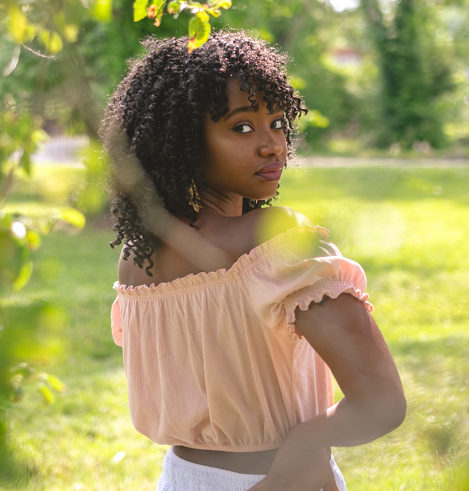I feel …liberated. In more ways than one my life has turned itself upside down into something more beautiful than I could have imagined. And that’s even amid all its chaos. In fact, I’ve learned to thrive in the chaos. But its not an easy task. And I’m still learning.

I’ve recently tapped into Instagram stories as an expansion of my creative expression and, in full-circle fashion, it’s led me back here. Back home. Where my creative expression overflows in its fullest form.

Talking about love deserves much more attention than just the trifecta theory, or any theory that focuses mostly on the qualities of another person (or what you share with this other person). What about you? Are you ready for that person? And what does your love for yourself and for your personal passions and pursuits look like?
What if love in all forms is interconnected?

After stumbling upon my attachment style in therapy, I became so intrigued by the revelation that I started to research on the topic on my own. And I have to say I am fascinated by what I’ve already begun to discover about how my childhood, family structure and fundamental development has impacted my past and present relationships. In taking my reflection efforts from the trifecta theory more introspectively, I realize that it’s worth paying just as much attention to the specific interactions within my romantic relationships that weren’t favorable as I have to ones that were.
It’s dawned on me that no matter how seamless of a match two people have potential to be, it only makes sense that a person with an anxious attachment style would impinge on the needs and boundaries of someone with an avoidant attachment style. Likewise, it makes sense that someone with an avoidant attachment style is incapable of fully meeting the needs of someone with an anxious attachment style. The latter seeks intimacy and closeness, while the former flees from it. (The same is probably also true when the former is an individual with a disorganized attachment style, who has trouble opening up and trusting others.) And so on and so forth.
It also seems completely logical why there is this notion that we should all strive to develop ourselves to a place of “secure” attachment. Perhaps that’s what true self-development is all about; reaching a state of self-awareness where we can be honest with ourselves and acknowledge that we have full agency to change the facets of these truths that are unhealthy.

On attachment styles, taking this quiz may be a good place to start. But I’ll outline the basics below from my preliminary understanding of the subject.
According to The Attachment Theory Project, there are three insecure attachment styles: anxious/preoccupied, avoidant/dismissive and disorganized/fearful-avoidant.
Anxious/preoccupied attachment is characterized by those who had their needs met inconsistently by their caregivers. As adults, these individuals experience emotional exhaustion from being sensitive to the needs of others and can be somewhat self-sacrificial in the process of seeking reciprocity of love and refuge from abandonment.
Avoidant/dismissive attachment is characterized by those who once expressed a need for emotional support from their caregivers but did not receive it in the way they desired. As adults, these individuals experience discomfort with closeness and intimacy and have developed extreme independence in relying on themselves for emotional support.
Disorganized/ fearful-avoidant attachment is said to be a mixture of anxious and avoidant attachment, whereby an individual who had an emotionally unavailable or abusive caregiver experiences mistrust for others and engages in self-destructive behavior in adulthood.

I’m no expert in this topic, but if you read through these descriptions and nothing at all resonated with you, congratulations, you’re probably in the half of the population that is securely attached.

As for the rest of us, we’ve got some serious intentional healing and self-work to do.
Speaking from experience in my own healing and self-awareness journey, recognition and acceptance are great places to start. It’s a tough walk, but a worthy one.
I see no reason why we can’t take that trip together. ♡

